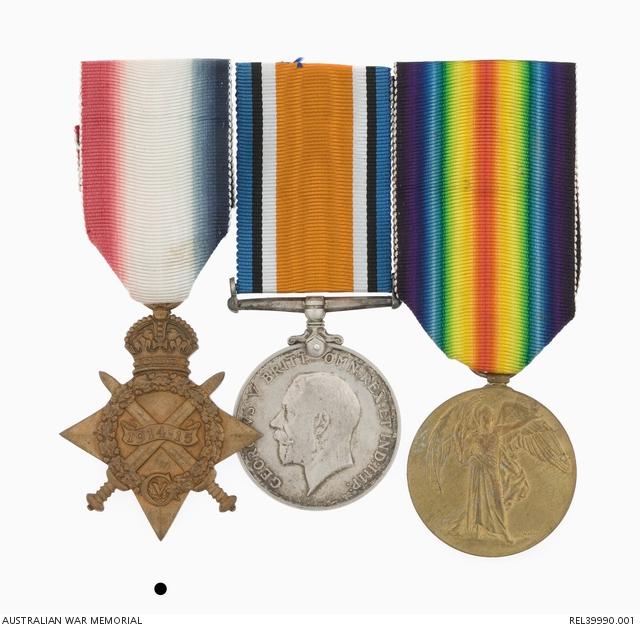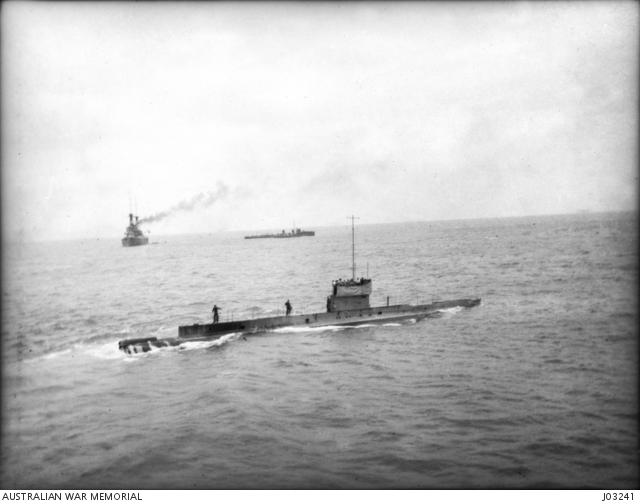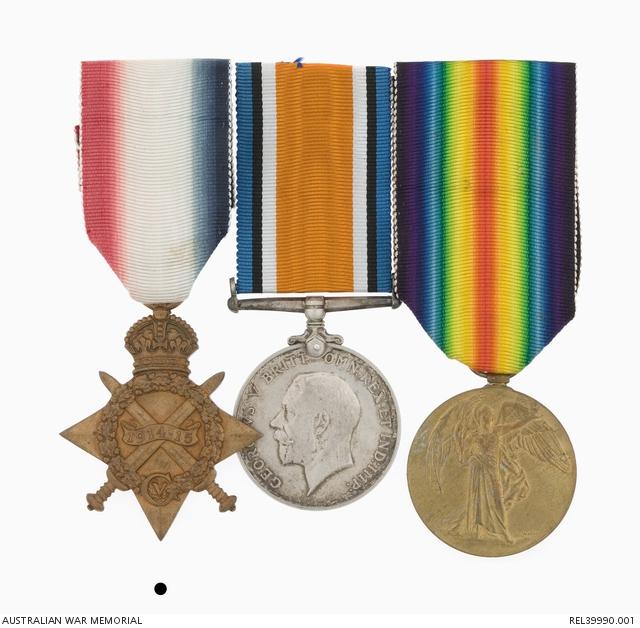John Joseph Moloney

John Moloney’s medals. From left to right: the 1914–15 star; the British War Medal 1914–20; and the Victory Medal.
John Joseph Moloney was born to Joseph and Alice Moloney on 25 January 1889 in Capalaba, Brisbane. On 7 December 1912, at the age of 23, John joined the Royal Australian Navy (RAN) for a seven-year service. He completed engine room training in Australia before transferring to London for further training and to join the crew of the RAN’s new submarines AE1 and AE2.
John was aboard the AE1 as it sailed with the AE2 on the long voyage to Australia. The submarines took 78 days to complete their journey, which included many stops at different ports. Along the way the vessels had frequent mechanical difficulties, and the crews suffered from the conditions on board. AE1’s commander, English-born Lieutenant Thomas Fleming Besant, described life as a submariner:
… it’s not all beer and skittles and perhaps it is a harder life than in other branches of the service but it’s the life I’ve chosen. Oh, yes, it’s dangerous if you want to look at it like that but it’s got to be done – and every man in the Navy, no matter in what branch he is in, has to be prepared to meet danger when it comes.¹1
The submarines made it safely into Sydney Harbour on 24 May 1914. Joseph and the other sailors had little time to enjoy being back on land; the First World War broke out on 4 August 1914 and they were called up for duty once more.
AE1 and AE2 were sent with other naval vessels to patrol the waters and hunt enemy ships around New Guinea. On 14 September 1914 AE1 and HMAS Parramatta left Blanche Bay, New Britain, to patrol around Cape Gazelle. It was on this mission that the AE1 and its 35 crew, including John Moloney, disappeared without a trace, and were never seen again.
The loss of the AE1 in such mysterious circumstances caused a great deal of sadness for the families of the crew, including John Moloney’s wife, Beatrice May. The men were also mourned by the RAN and the wider Australian community. John Wheat, who had served aboard AE2, wrote in his diary:
We took the first patrol on the 13th, they took the second next day. We came back, they didn’t. The path of our duty became the high-way of mystery for they never came back. They lie coffined in the deep, keeping their silent watch at Australia’s North Passage, heroes all.²
¹ Graham Seal, Finding the lost submarine: the mystery of the AE1, Submarine Institute of Australia, http://www.submarineinstitute.com/userfiles/File/AE1_-_THE_LOST_SUBMARINE.pdf, p.3.
² John Wheat, diary, Australian War Memorial: AWM 3DRL/2965.
Questions and activities
1. The conditions on board the submarines were uncomfortable and dangerous. What are some of the reasons men like John would have wanted to join the navy and serve on a submarine?
2. The AE1 and AE2 submarines were new technology in the First World War. What would they have been used for? Why were they so dangerous for their crews?

AE1 with HMAS Australia and HMAS Yarra near Rossel Island, September, 1914.
3. John Moloney’s medals, pictured below, are held in the Australian War Memorial’s collection. Research these medals. What information can you gain about his service from these medals? The following links may be useful:
http://www.greatwar.co.uk/medals/ww1-campaign-medals.htm
http://www.nationalarchives.gov.uk/pathways/firstworldwar/service_records/med_awarded.htm
4. Why would John’s family have kept his medals, and why would they have donated them to the Australian War Memorial?

John Moloney’s medals. From left to right: the 1914–15 star; the British War Medal 1914–20; and the Victory Medal.
Teachers, if you’d like to share some of your class work with us, send it to: education@awm.gov.au and we can display it on our classroom showcase: /education/classroom-showcase/.
References
Joseph John Moloney’s medals, Australian War Memorial: AWM REL39990.001: /collection/REL39990.001.
National Archives of Australia, service records: Joseph John Moloney: http://recordsearch.naa.gov.au/scripts/Imagine.asp?B=4530030.
“Graham Seal, Finding the lost submarine: the mystery of the AE1, Submarine Institute of Australia: http://www.submarineinstitute.com/userfiles/File/AE1_-_THE_LOST_SUBMARINE.pdf.
John Wheat, diary, Australian War Memorial: AWM DRL/2965.